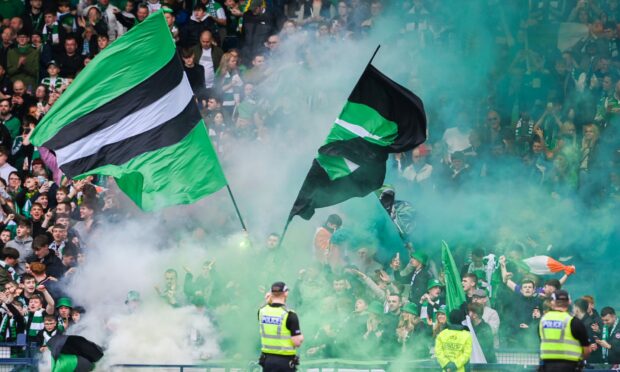
The widespread use of cocaine among so-called “carnival fans” is fuelling trouble and disruption in Scottish football, a leading expert warns today.
Professor Geoff Pearson, an academic specialising in law and football, said the Class A drug has been normalised among a new generation of fans as part of the match-day experience.
He said supplies of affordable but high-quality cocaine, a hard-core group of fans who take drugs, a post-lockdown party atmosphere, and restrictions on drink inside stadiums are driving the problem.
His concern is echoed by broadcaster David Tanner, who has also seen evidence of rising cocaine use among fans.
The concern emerged as Celtic and Rangers go head to head in a Scottish Cup semi-final today at Hampden. Their last meeting at Ibrox two weeks ago had to be halted after bottles were thrown on the pitch and a man later appeared in court charged with throwing a bottle at a Celtic physiotherapist.
Pearson, of Manchester University, said: “A lot of lower-level disorder and antisocial behaviour at football is part of the transgressive expression of fans, particularly away from home. Cocaine use has now become part of that fan experience for some. They want to engage in chanting, creating an atmosphere, gathering together in big groups and drinking a lot of alcohol, now we can add taking cocaine to that mix.
“All the evidence suggests that cocaine use in football crowds has increased over the last 10 to 15 years as it has in the wider popular culture.
“The bulk of fans are just there to watch the match and then go home. However, there is a subculture that I’ve labelled carnival fans.
“For these fans, the match is only one part of the experience that they’re after. What they really want is to gather together, express their identity, get drunk and end the day with a bunch of stories and memories they can recount and relive throughout the working week.
“Cocaine has now become part of that experience for this subculture of football fans in a way that it wasn’t 15 or 20 years ago.”
He added: “In most urban spaces, cocaine is exceptionally easy to get and most people will say that the quality is better than it was 10 or 15 years ago.
“It’s more reliable and the price hasn’t gone up as the quality has gone up. Sniffer dogs could be a solution in Scotland. They have been used for quite a while outside stadiums in England and Wales.”
A newspaper investigation in 2019 revealed fans were snorting cocaine inside Scotland’s football grounds with traces of the Class A drug found in tests at six of the country’s top-flight stadiums.
Former Sky Sports journalist David Tanner believes drug use has increased recently. The Talk Sport presenter said: “There is a definite feeling that cocaine use is getting worse. I am old enough to remember the bad old days of the 70s and 80s with appalling booze-fuelled violence.
“We thought football had been reclaimed and it seemed to be safer for families and women but now it seems to be going backwards. Fans are complaining to me that they do not feel comfortable at games, with people taking cocaine in toilets quite openly.
“The behaviour in and around matches in Scotland is definitely getting worse and supporters are feeling uneasy. It has got worse since lockdown and we need to have a mature discussion about it.”
Police Scotland’s Chief Superintendent Mark Sutherland said officers would maintain public safety and minimise disruption at both Scottish Cup semi-finals at Hampden Park, Glasgow. He said: “We continue to work closely with a range of partners ahead of the match including all four clubs involved.”

Enjoy the convenience of having The Sunday Post delivered as a digital ePaper straight to your smartphone, tablet or computer.
Subscribe for only £5.49 a month and enjoy all the benefits of the printed paper as a digital replica.
Subscribe